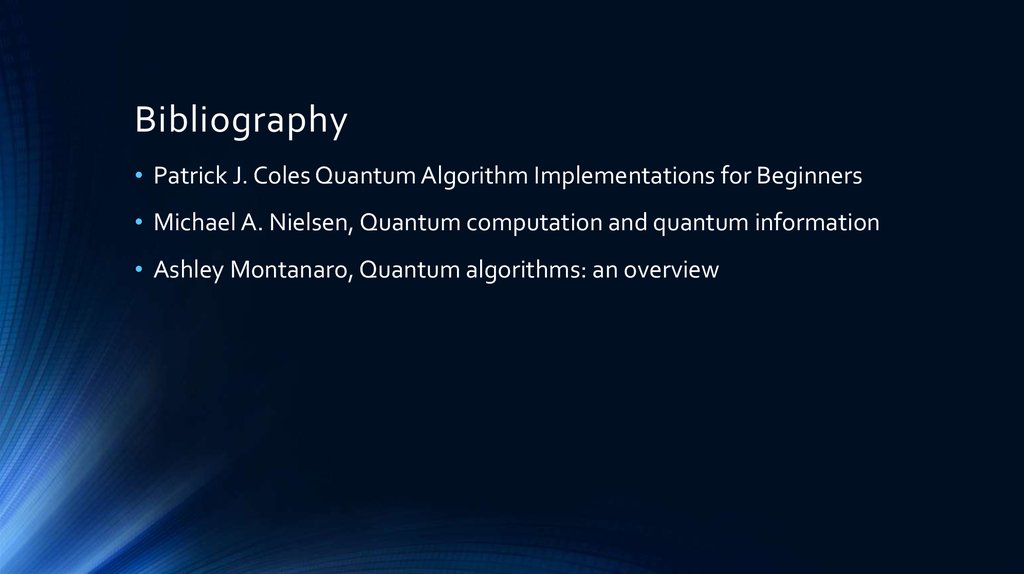Similar presentations:
Quantum Computing
1. Quantum Computing
Ч ИГ РИНА Е .О., В О Р О БЬ Е В Ю. А , К Т МО 1 -52. Contents
• Glossary• Quantum Computing in Brief
• Methodology
• State of the Art and Open Issues
• Industry Leaders, Startup
• Bibliography
3. Glossary
• Quantum Computing is computing using quantum-mechanical phenomena, suchas superposition and entanglement.
• Qubit or Quantum bit is the basic unit of quantum information—the quantum
version of the classical binary bit physically realized with a two-state device.
• Superposition is a fundamental principle of quantum mechanics. It states that,
much like waves in classical physics, any two (or more) quantum states can be
added together ("superposed") and the result will be another valid quantum state;
• Entanglement is a physical phenomenon which occurs when pairs or groups
of particles are generated, interact, or share spatial proximity in ways such that
the quantum state of each particle cannot be described independently of the state
of the other(s), even when the particles are separated by a large distance—instead,
a quantum state must be described for the system as a whole.
4.
Quantum Computing in Brief5. Quantum Computing in Brief:
• A quantum system replaces classical bits with quantum qubits• Qubits follow the superposition principle and can exist as “0” and “1”
at the same time
• Using qubits, one could process all possible combinations at the same
time
6. Quantum Computing in Brief: Quantum Theory
• Energy, like matter, consists of discrete units, rather than solely as acontinuous wave.
• Elementary particles of both energy and matter, depending on the
conditions, may behave like either particles or waves.
• The movement of elementary particles is inherently random, and,
thus, unpredictable.
• The simultaneous measurement of two complementary values, such
as the position and momentum of an elementary particle, is
inescapably flawed; the more precisely one value is measured, the
more flawed will be the measurement of the other value.
7. Methodology: Developments of Quantum Theory
8. Methodology: Superposition
9. Methodology: Quantum Programming Shor’s algorithm
• Shor’s algorithm is a quantum algorithm for integer factorization,informally, it solves the following problem: Given an integer M, find
its prime factors.
• On a quantum computer, to factor an integer N, Shor's algorithm runs
in polynomial time (the time taken is polynomial in logN, which is the
size of the input).
10. Methodology: Quantum Programming Grover’s algorithm
• Grover's algorithm is a quantum algorithm that finds with highprobability the unique input to a black box function that produces a
particular output value, using just O(√N) evaluations of the function,
where N is the size of the function's domain
11. State of the Art and Open Issue: State of the Art
12. State of the Art and Open Issue: Open Issue
• Interference• Error correction
• Output observance
13. Industry Leaders, Startups
14.
15. Bibliography
• Patrick J. Coles Quantum Algorithm Implementations for Beginners• Michael A. Nielsen, Quantum computation and quantum information
• Ashley Montanaro, Quantum algorithms: an overview
















 english
english








